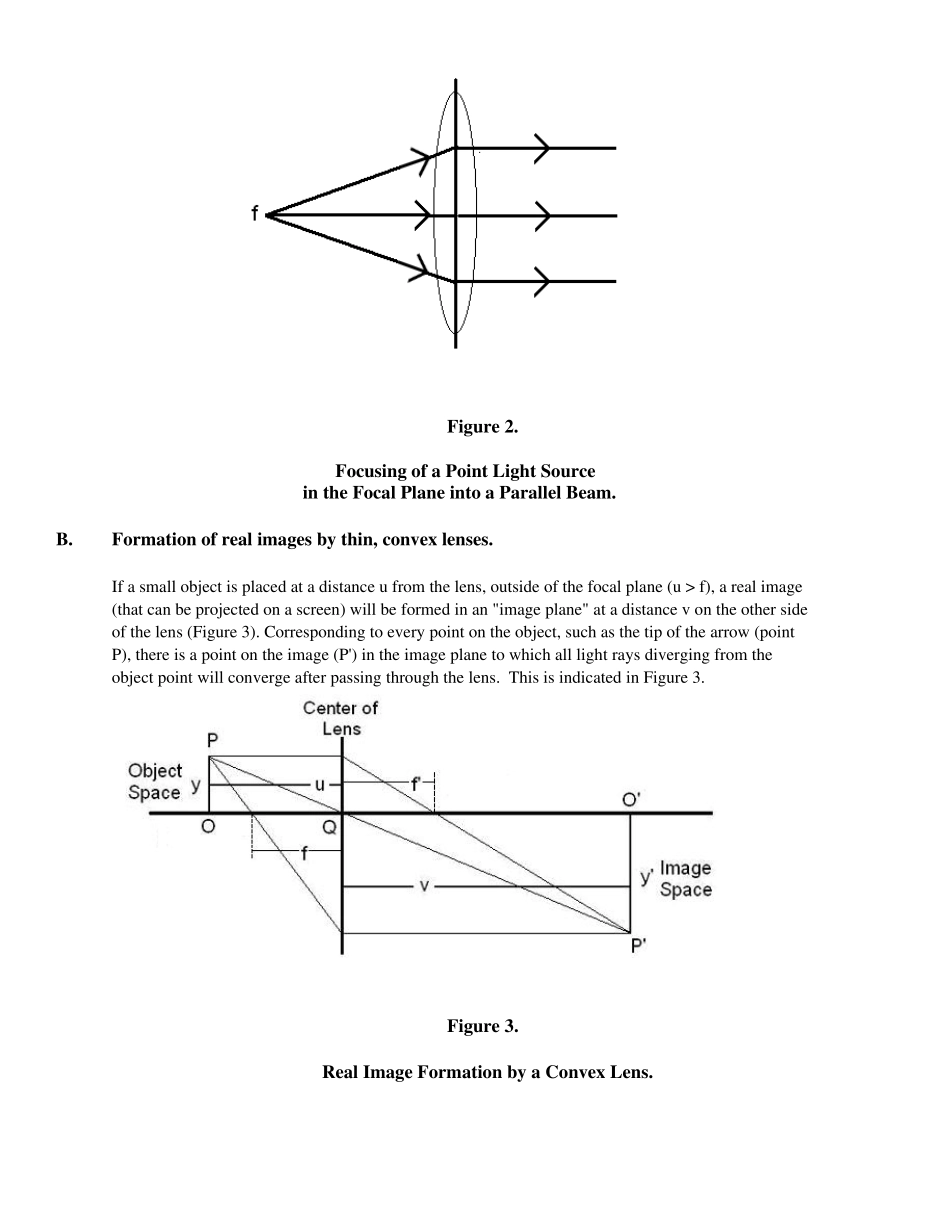Ex periment #7, Geometrical Optics Image Formation by a Thin Lens 1 Purpose The propagation of light through optical devices whose dimensions are large compared to the wavelengths of the light can be understood using ray diagrams to denote the directions of propagation of the light through the optical components of the device, e.g., lenses, etc. In this experiment we will study the propagation of light through a lens and verify the basic lens equations. 2 Theory A. Focusing of parallel beams of light rays by a thin lens. If a parallel beam of light rays is incident on a thin convex lens, the rays will be made to converge by refraction at the lens surfaces and will be brought to a focus in the focal plane of the lens. This is shown in Figure 1 for a beam of rays parallel to the axis of the lens which converge to a point on the axis of the lens in the focal plane, i.e., the focal point of the lens. Figure 1. Focusing of a Parallel Light Beam. The distance of the focal plane from the lens, the focal length f, is a characteristic parameter of any lens and is directly proportional to the radii of curvature of the lens surfaces (spherical lenses). Thus, the focal length of a lens is inversely related to the focusing power of the lens, i.e., a shorter focal length lens has a "stronger" focusing power. Since light rays are reversible, it follows that if a point source of light is placed at a point in the focal plane of the lens, the light rays diverging from it will be refracted through the lens into a parallel beam of light rays on the other side (Figure 2). Figure 2. Focusing of a Point Light Source in the Focal Plane into a Parallel Beam. B. Formation of real im...


